'A Way to Win.' New Massillon Museum exhibit showcases Paul Brown's football genius
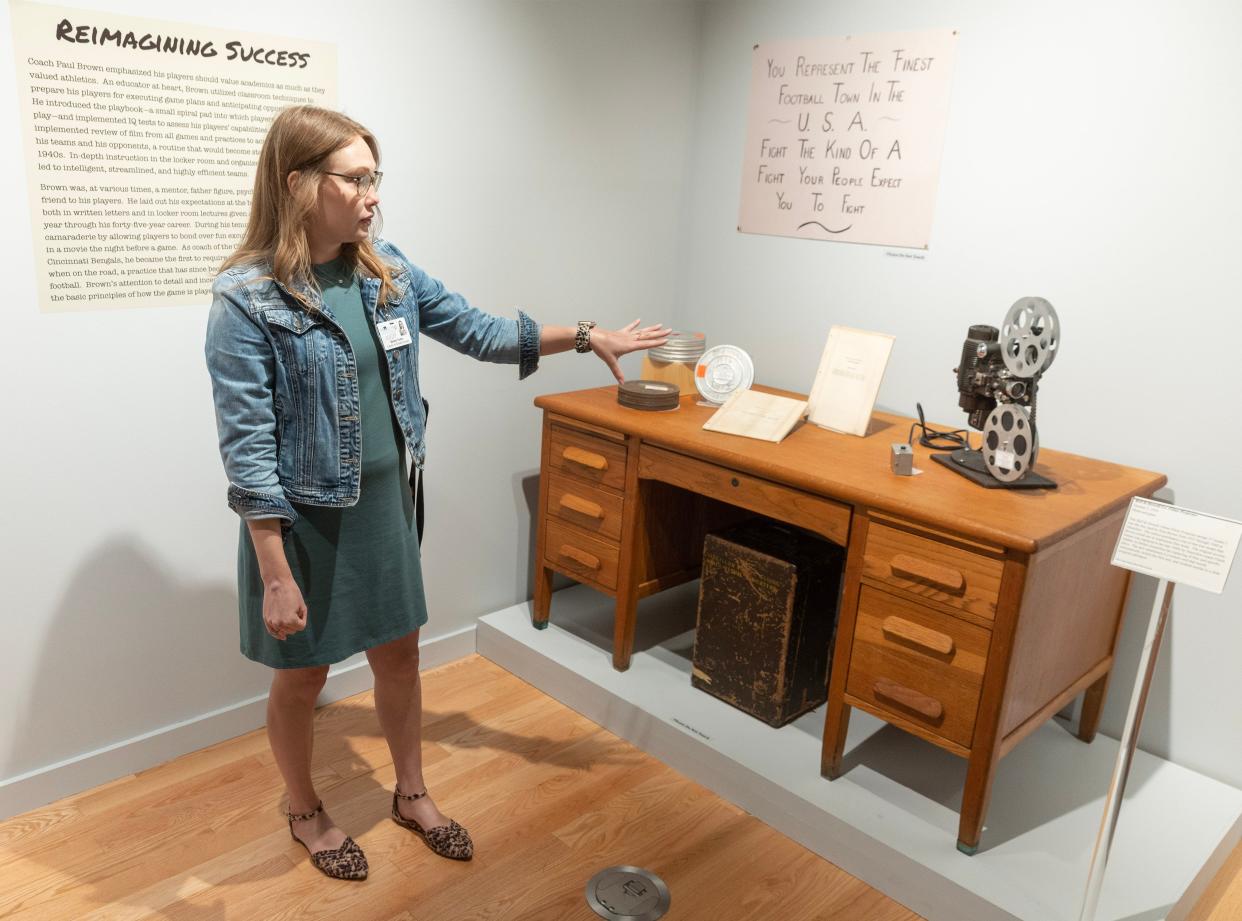
- Oops!Something went wrong.Please try again later.
- Oops!Something went wrong.Please try again later.
MASSILLON − Few people qualify as a genius.
The late football coaching legend Paul Brown was one.
The Massillon Museum's newest exhibit, "A Way to Win: Paul Brown's Innovations," showcases the man many credit for modernizing football.
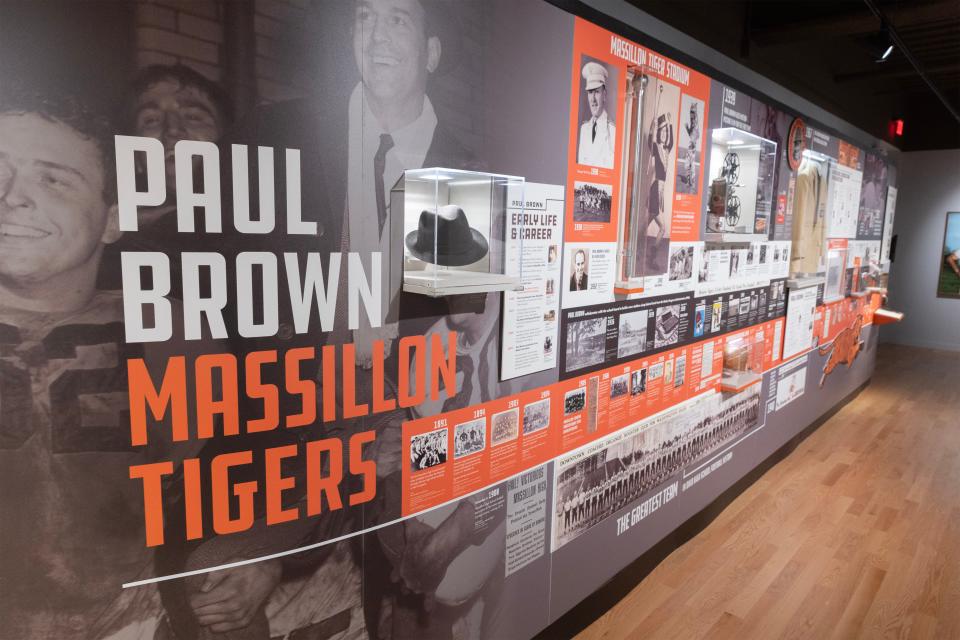
The new exhibit, an extension of the museum's permanent Paul Brown Museum, highlights Brown's creativity as a coach through numerous artifacts from the museum's permanent collection.
It also features items donated by Brown's second wife, Mary, and objects on loan from private collectors and the Massillon Booster Club, according to Bailey Yoder, the museum's curator of football heritage.
"It's personally my favorite exhibit that I've done so far," Yoder said.
Yoder said she was able to install the newest exhibit thanks to an expansion of the museum in 2018.
"The exhibition reflects not only the ingenuity of Paul Brown throughout his career, but demonstrates the wonderful partnership Massillon Museum has with the Pro-Football Hall of Fame and with the community," said Massillon Museum Executive Director Alexandra Coon. "Bailey Yoder was able to amplify our museum's collections with loans to tell a dynamic story about Brown's inventive mind."
More: 'I think they would be proud.' Massillon Museum marks 90th anniversary
What's in the new exhibit 'A Way to Win: Paul Brown's Innovations'
The new exhibit includes one of Brown's famous fedoras, one of six in the museum's permanent collection; his 1967 Pro Football Hall of Fame gold jacket and naval reserve coaching jackets; and several illustrations and portraits donated by Mary Brown.
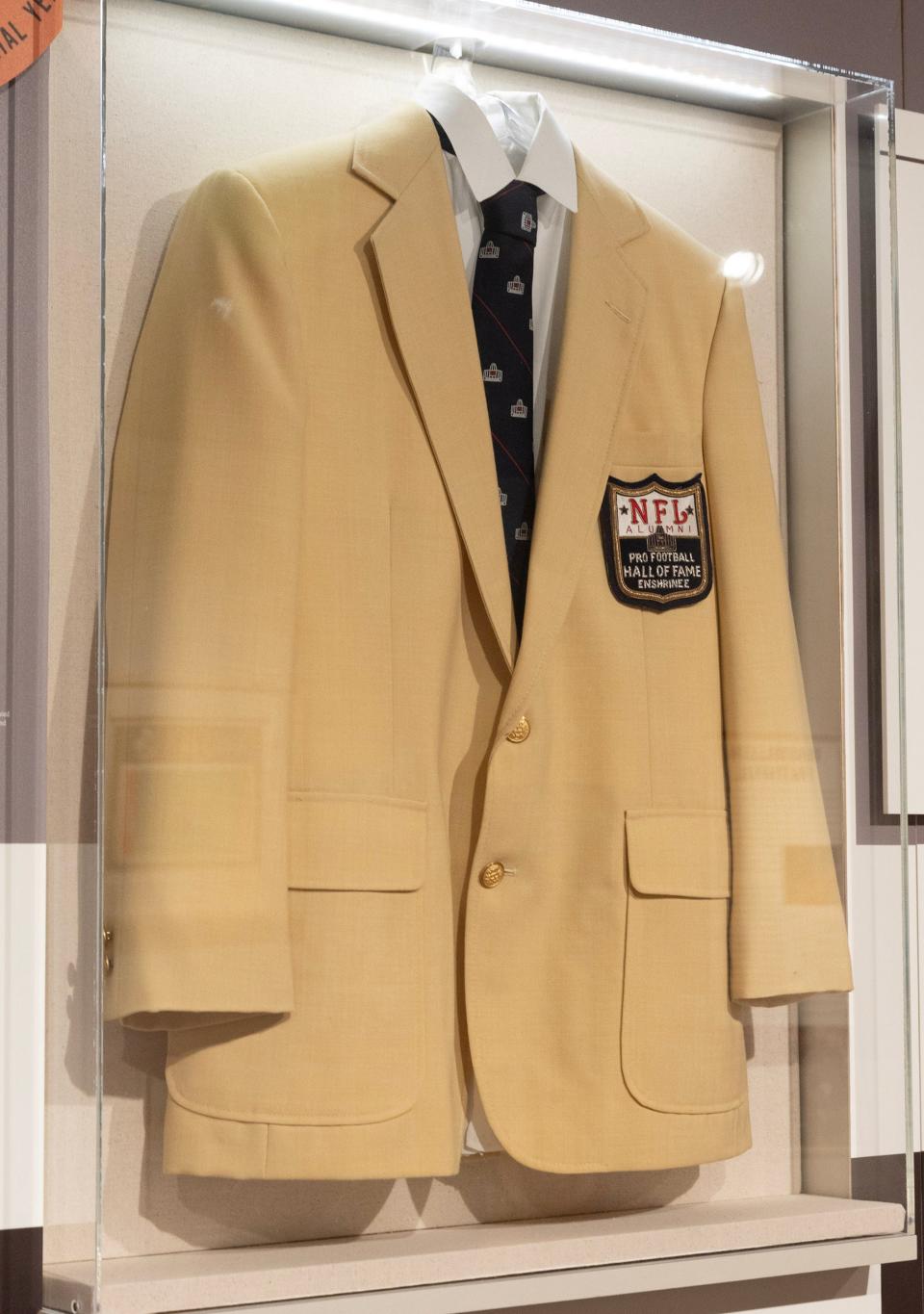
There's also a display of Massillon Tigers artifacts arranged by David Maxwell, former intern from Walsh University.
Brown, born in Norwalk in 1908, moved to Massillon in 1917 when his father, Lester, who worked for the Wheeling and Lake Erie Railroad, was transferred.
In 1923, Brown joined the Washington High School Tigers football team, where he was the starting quarterback. After graduating in 1926, he enrolled in Ohio State University and transferred to Miami University in 1927 where he was the varsity quarterback for two of his three seasons.
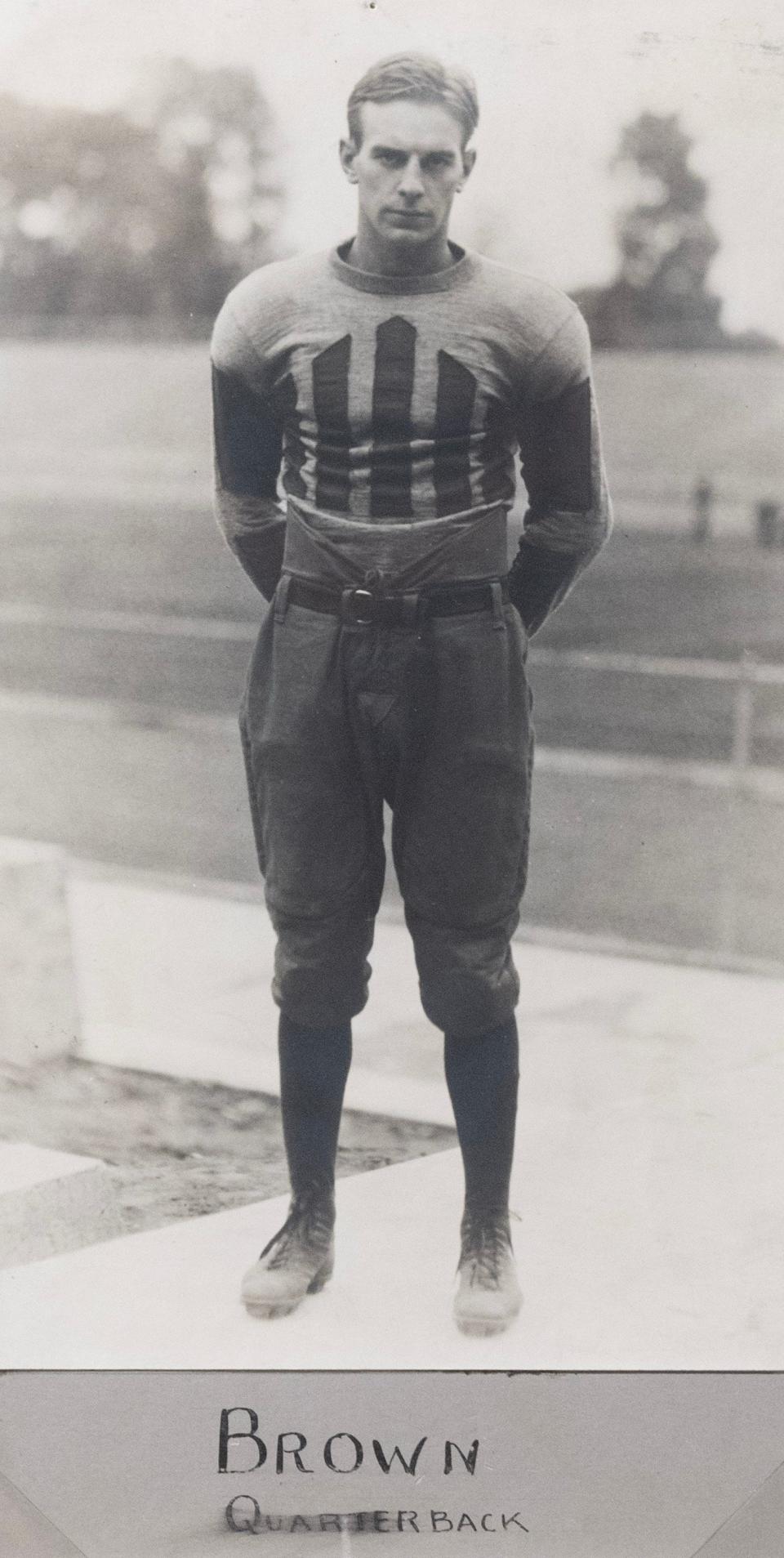
After marrying his high school sweetheart, Kathryn Kester in 1929, Brown graduated from Miami in 1930 and took a job teaching and coaching football for two years at Severn Prep, a naval academy school in Severna Park, Maryland.
The couple returned to Massillon in 1932, where Brown took a job teaching and coaching from 1932 to 1940. Under Brown, the Tigers went 80-8-2 and won six state titles. He also helped the school develop its booster club in 1934, which ensured players had adequate food, transportation and mentoring.
It was during this time in Massillon that Brown began to introduce the innovations that made him a legend.
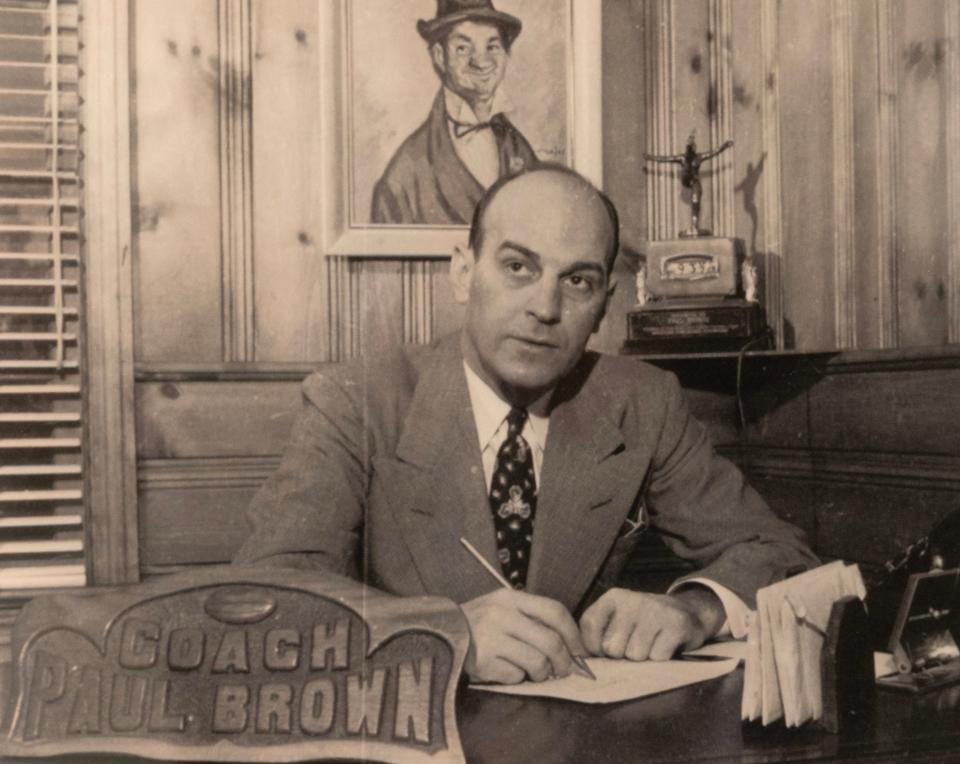
Paul Brown innovations highlighted at Massillon Museum
Yoder said Brown was the first coach to employ classroom teaching, playbooks and game film as a study tool. The exhibit includes film projectors he used at Massillon and as coach of the Cleveland Browns.
The exhibit also features QR codes that allow visitors to listen to one of Brown's locker room talks, as well as view game film, and a Cleveland Browns halftime show, which he helped to develop.
After Massillon, Brown took his talents to Ohio State University, where he coached from 1941 to 1943, delivering the Buckeyes' first national championship in 1942.
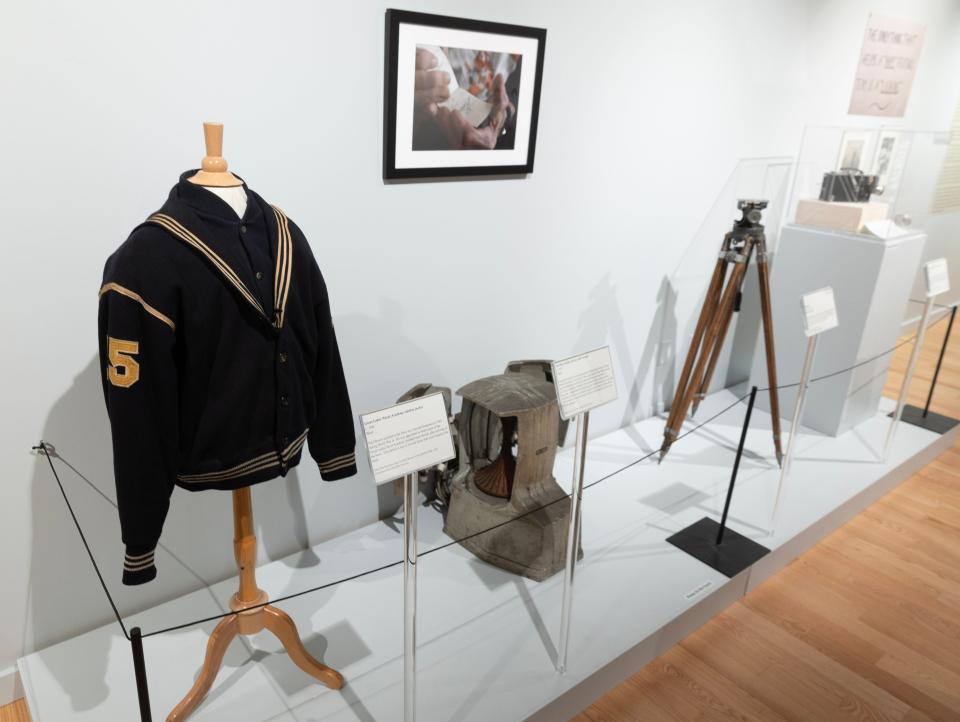
He also used his coaching to further integrate the game, both at the college and NFL level.
.At the outset of World War II, Brown joined the Navy Reserves in 1943, where he coached at the Great Lakes Naval Academy. It was there that he met Marion Motley, a former McKinley Bulldogs star who would go on to become a Cleveland Brown and fellow Pro Football Hall of Famer.
Motley made history Marion Motley memorialized in Canton near Pro Football Hall of Fame
He brought Motley with him when he became the Browns' co-founder and head coach in 1946 in the NFL's new All-America Football Conference.
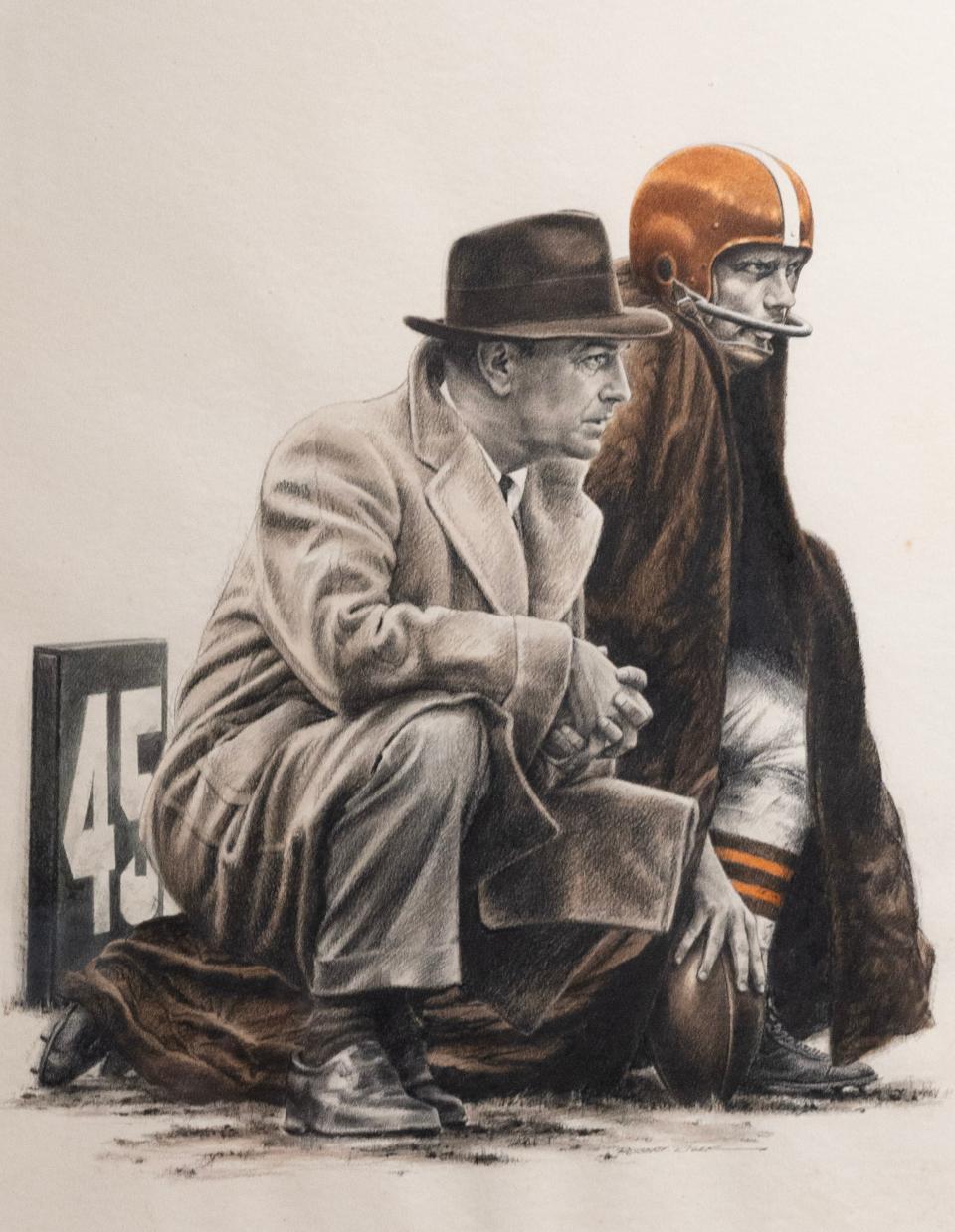
In the NFL, Brown's innovation continued. Yoder said he commissioned the Riddell Co. to create the league's first permanent face mask in 1953. The exhibit also features a ball-warming machine made by Gil-Mac, an Akron-based company whose inventor approached Brown with a claim that his device would keep footballs warm during cold weather.
"It didn't work as intended, "Yoder said. "It actually cooked the leather, and the balls became like rocks."
Brown invented a radio system for quarterback helmets. It was outlawed by the NFL, only to be restored in 1994. Today, no NFL quarterback plays without it.
In 1947, Brown invited George Bird, founder of the Tiger Swing Band, to form the Musical Majorettes, an all-female marching band that performed at the Browns' halftime shows. The group's musical charts and one of its sweaters are part of the exhibit.
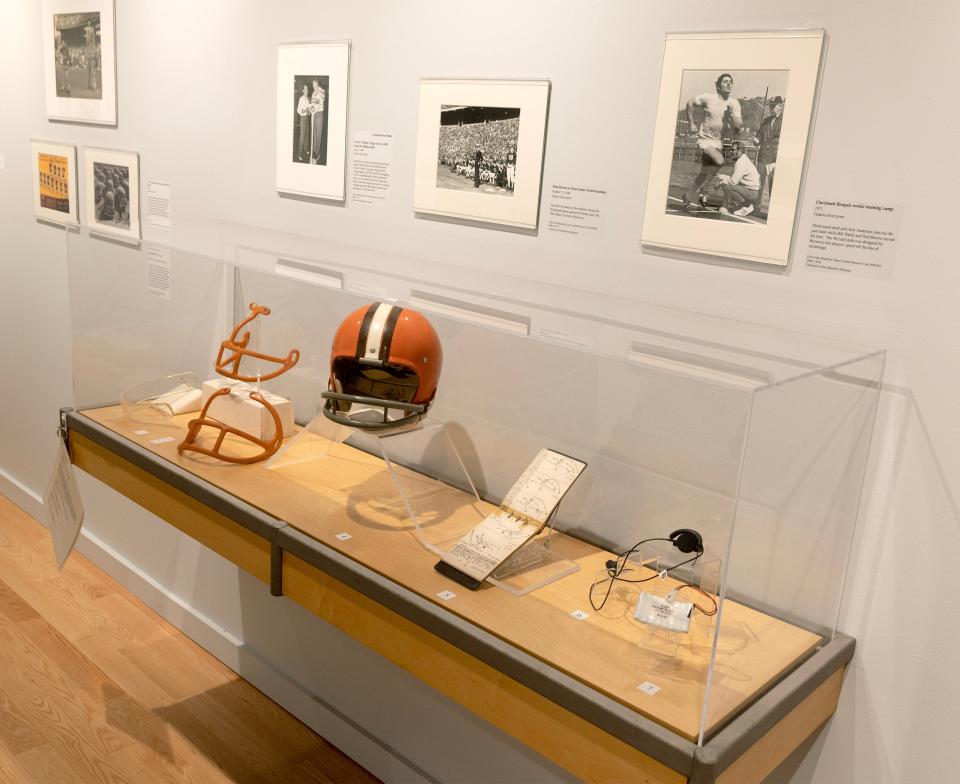
He's also credited for creating the draw play, originally called the "Motley Trap," Yoder said.
Brown and Modell clash
Joe Horrigan, an NFL football historian, author and senior adviser with the Pro Football Hall of Fame, said Brown's contributions to the game are significant.
"I would rank him among the most influential," he said. "He not only excelled as a coach, but he was also an innovator and an agent for change as the game itself was growing and improving. But he was always and foremost a teacher. He treated his players as men and insisted that they behave as positive examples of the discipline and professionalism he valued, taught and practiced."
Early Browns cheerleaders The 1950s "Cleveland Browns Cassidyetts" cheerleaders hailed from Stark County
Despite a 158-48-8 record, four All-America Football Conference championships and three NFL championships (1950, 1954 and 1955) over 17 seasons, Brown was fired in 1963 by Cleveland Browns team president Art Modell, part of a group of investors who bought the team for $4 million.
Horrigan said Brown's firing might have been a matter of a new owner squashing any potential challenges to his authority.
"Historically, coaches and owners often find themselves at odds as to who should be running the team," he said.
"Under the Browns' original owner Mickey McBride (1946-1952), a Clevelander, and later a group of Cleveland businessmen who purchased the club in 1953, Paul pretty much had complete control of the team. However, when Art Modell, an advertising executive from Brooklyn, N.Y., purchased the team in 1963, he was more 'hands on' than what Paul was accustomed to in the past. And even though Modell proclaimed that Paul Brown would have control of the team, between the two men, the understanding of what was meant by 'control,' probably differed."
Horrigan noted that at the time Modell purchased the team, Paul Brown had a 15% ownership stake.
"Modell bought out Brown’s share and probably, at least in Modell’s mind, ended Paul’s 'executive decision making' ability," he said. "Also, it has been reported that Art may have lost some of his confidence in Paul after a couple of personnel decisions he made without consulting him. That, coupled with a growing rift between Paul and some players, including Jim Brown, may have expedited Art’s decision."
Was it a mistake to fire one of the game’s greatest coaches?
"Probably yes," Horrigan said. "But I might offer this… maybe Modell didn’t fire his 'coach' as much as he fired someone he thought was a challenge to his authority as team owner. Wouldn’t have been the first or last time that ever happened."
A spurned Brown launched the Cincinnati Bengals in 1967, coaching the team from 1968 to 1975.
The Massillon School District renamed its football stadium Paul Brown Tiger Stadium in 1976.
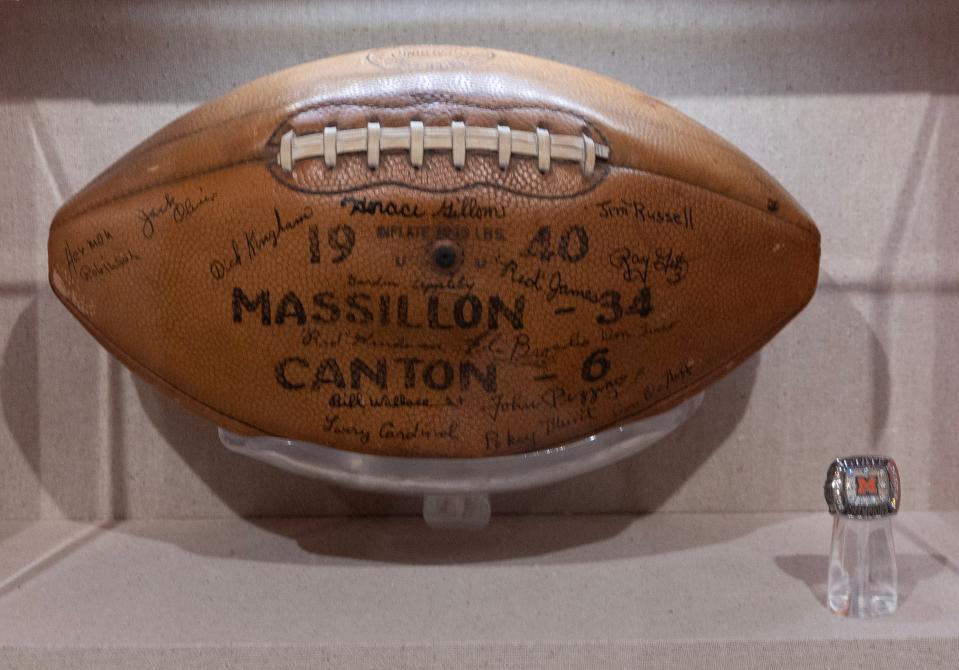
Brown continued to return to his adopted hometown, which honored him at every opportunity. He died in 1991 at 82.
The exhibit is open through Jan. 7. The Massillon Museum is at 121 Lincoln Way E. Exhibit hours are 9:30 a.m. to 5 p.m. Tuesday through Saturday, and 2 to 5 p.m. Sunday. Admission is free.
Reach Charita at 330-580-8313 or charita.goshay@cantonrep.com
On Twitter: @cgoshayREP
This article originally appeared on The Repository: 'A Way to Win.' Massillon Museum exhibit examines Paul Brown's genius

